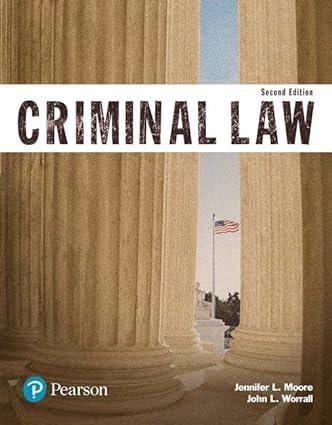Virginias public institutions of higher learning include an incomparable military college, Virginia Military Institute (VMI). The United
Question:
Virginia’s public institutions of higher learning include an incomparable military college, Virginia Military Institute (VMI). The United States maintains that the Constitution’s equal protection guarantee precludes Virginia from reserving exclusively to men the unique educational opportunities VMI affords. We agree.
. . . In 1990, prompted by a complaint filed with the Attorney General by a female high-school student seeking admission to VMI, the United States sued the Commonwealth of Virginia and VMI, alleging that VMI’s exclusively male admission policy violated the Equal Protection Clause of the Fourteenth Amendment. Trial of the action consumed six days and involved an array of expert witnesses on each side.
. . . Today’s skeptical scrutiny of official action denying rights or opportunities based on sex responds to volumes of history.
. . . Through a century plus three decades and more of that history, women did not count among voters composing “We the People”; not until 1920 did women gain a constitutional right to the franchise. And for a half century thereafter, it remained the prevailing doctrine that government, both federal and state, could withhold from women opportunities accorded men so long as any “basis in reason” could be conceived for the discrimination.
. . . To summarize the Court’s current directions for cases of official classification based on gender: Focusing on the differential treatment or denial of opportunity for which relief is sought, the reviewing court must determine whether the proffered justification is “exceedingly persuasive.” The burden of justification is demanding and it rests entirely on the State.
The State must show “at least that the [challenged] classification serves ‘important governmental objectives and that the discriminatory means employed’ are ‘substantially related to the achievement of those objectives.’” The justification must be genuine, not hypothesized or invented post hoc in response to litigation. And it must not rely on overbroad generalizations about the different talents, capacities, or preferences of males and females.
Questions:
1. What level of scrutiny is the court using to evaluate the potential Equal Protection Clause violation?
2. How does gender discrimination differ from racial discrimination?
3. What is the main point of Justice Scalia’s dissent?
Step by Step Answer:






